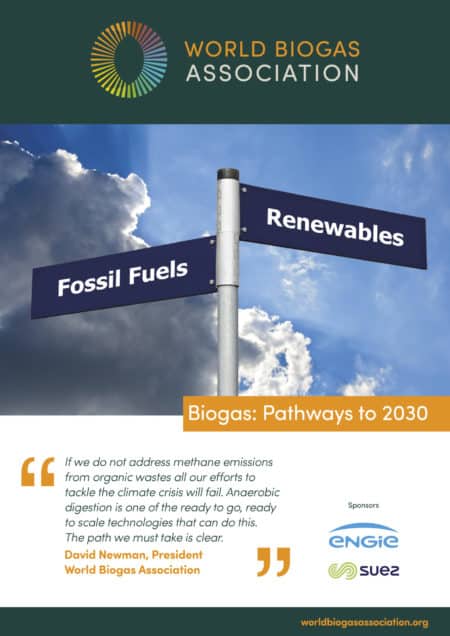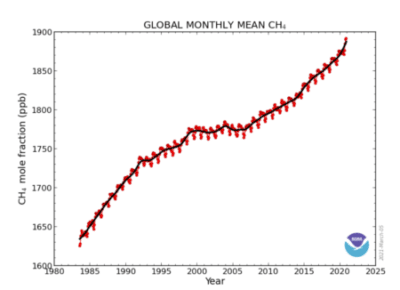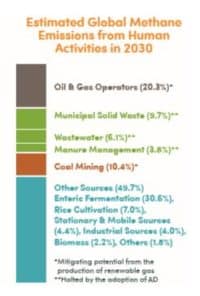
Record rise in methane emissions puts WBA’s ‘Pathways’ report into sharp focus

In 2020 there was a record-breaking rise in global methane emissions, the US National Oceanic and Atmospheric Administration (NOAA) has revealed.
NOAA’s preliminary analysis showed the annual increase in atmospheric methane was 14.7 parts per billion (ppb), the largest annual increase recorded since systematic measurements began in 1983. The global average burden of methane for December 2020, the last month for which data has been analysed, was 1892.3 ppb. That would represent an increase of about 119 ppb, or 6%, since 2000.
Over the same period, levels of CO2 in the atmosphere have risen by 12% (43 parts per million (ppm)) taking the total to 414.4ppm. Despite the economic downturn caused by the Covid 19 pandemic, credited with reducing carbon emissions by 7%, atmospheric carbon increased by 2.6ppm. The NOAA note that without the slowdown 2020’s increase would have been the highest ever recorded.
Urgent need for systems change
 Both statistics reflect the urgent need for systems change if we are to keep global warming to the UN’s target level of “2C, ideally 1.5C”. Methane emissions are a cause for heightened concern because we are in a race against time. The scientists say we have 10 years to reverse the current emissions trend. Over its first 10 years in the atmosphere methane has ~86 times more global warming potential than CO2. In other words, one tonne of methane equals ~86 tonnes of CO2. There is no net zero if we don’t curb these emissions. The NOAA say anthropogenic emissions are the principal cause of the increase.
Both statistics reflect the urgent need for systems change if we are to keep global warming to the UN’s target level of “2C, ideally 1.5C”. Methane emissions are a cause for heightened concern because we are in a race against time. The scientists say we have 10 years to reverse the current emissions trend. Over its first 10 years in the atmosphere methane has ~86 times more global warming potential than CO2. In other words, one tonne of methane equals ~86 tonnes of CO2. There is no net zero if we don’t curb these emissions. The NOAA say anthropogenic emissions are the principal cause of the increase.
The International Energy Agency (IEA) Methane Tracker says 570 million tonnes of methane are emitted annually. This includes emissions from natural sources such as peat bogs (around 40% of emissions), and those originating from human activity (the remaining 60% – known as anthropogenic emissions), such as agriculture and waste management.
Biogas: Pathways to 2030
The production of biogas through anaerobic digestion can directly address ~20% of these anthropogenic emissions, through the treatment of unavoidable organic wastes from households and food manufacturing, manures and slurries, stubble burning and wastewater. In the process biogas upgraded to biomethane can mitigate 5% of global carbon emissions, delivering a total greenhouse gas saving of 10%.

If deployed immediately, modelling undertaken by the WBA shows that the world could get back on track to keep global warming below 2C, by capturing and recycling as many as possible of the 105 billion tonnes of unavoidable organic wastes generated annually by human activity.
How countries can do this is comprehensively addressed in WBA’s latest landmark report Biogas: Pathways to 2030.

